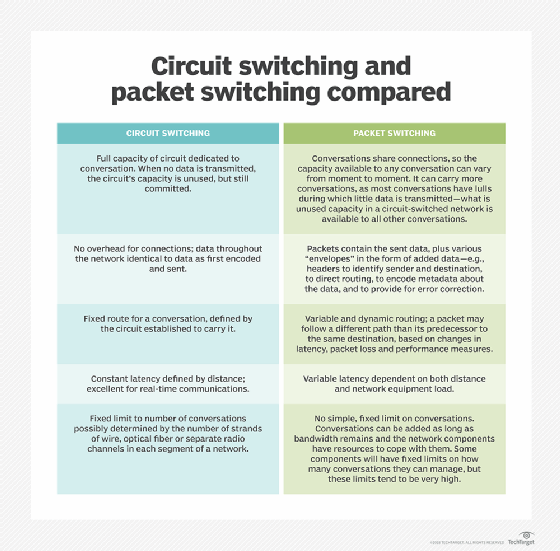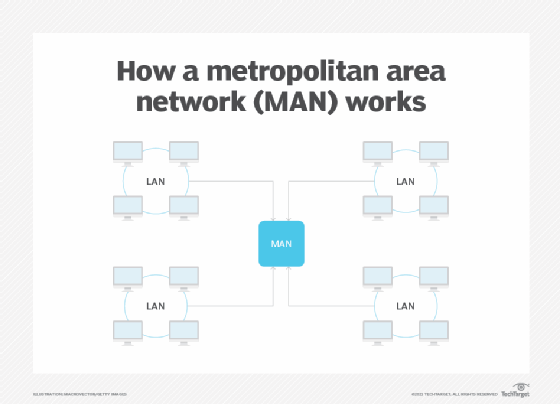Switched Multimegabit Data Service (SMDS)
What is Switched Multimegabit Data Service (SMDS)?
Switched Multimegabit Data Service (SMDS) is a public, packet-switched service aimed at enterprises that need to exchange large amounts of data with other enterprises over a wide area network on a nonconstant or bursty basis.
It extends the performance and efficiency of the company's local area network (LAN) over a wide area on a switched, as-needed basis. For this kind of data exchange, SMDS provides an architecture, as well as a set of services.
SMDS is designed for moderate bandwidth connections -- 1-34 megabits per second. This makes it perfectly suitable and affordable for LANs with such requirements.
Prior to 1995, the only way to connect LANs was through a dedicated, expensive private line. SMDS makes it possible to connect LANs more economically and, in many cases, more flexibly. SMDS can also be extended to support higher- and lower-bandwidth connections.
Additionally, SMDS provides bandwidth on demand for the bursty data transmission typically found on LANs since it is a connectionless service. This means that there's no need to set up a connection through the network before sending data.
This feature differentiates SMDS from other data services, like frame relay and asynchronous transfer mode (ATM). Another differentiating feature of SMDS is that it can be implemented transparently over any type of network and employ many kinds of networking technologies.
How does SMDS work?
Different types of devices can connect to a SMDS service, including bridges, routers and Channel Service Unit/Data Service Unit (CSU/DSU) hardware. SMDS is generally delivered over a Synchronous Digital Hierarchy ring or a Synchronous Optical Network ring. It has a maximum effective serving radius of approximately 30 miles (48 kilometers).
A LAN typically connects to SMDS through a router using an RS-449 interface and a CSU/DSU. For low-speed access, it uses a copper Digital Signal 1 connection, and for high transmission speeds, it uses a fiber Digital Signal 3 connection.
The connection between the LAN and the telecom provider's central office is Subscriber Network Interface (SNI). From here, the central office provides a gateway to the SMDS packet-switching network.

SMDS packets and addresses
SMDS Interface Protocol (SIP) is a serial protocol used for communication between the subscriber's LAN and the SMDS equipment at the telecom provider's central office. It packages data as Level 3 protocol data units and frames them for transmission. SIP is based on the Institute of Electrical and Electronics Engineers (IEEE) 802.6 standard for metropolitan area networks (MANs).
SMDS packets contain up to 7,168 bytes of data, a size that's large enough to accept the most common LAN packets. Each packet includes the source address and destination address and is sent separately from other packets.
The address consists of two fields: a 4-bit address type and a variable length E.164 address.
The address type could be either of the following:
- Single source, single destination.
- Single source sending identical packets to multiple destinations.
The E.164 address consists of up to 15 decimal numbers and includes a country code, area code and subscriber ID. It consists of two fields: a country code and a national significant number. Together, these fields create the address of the SNI. Multiple addresses are allowed per SNI.
SMDS service can also broadcast packets to multiple SMDS addresses. Each SMDS company is assigned one or more group addresses used to define destination groups. Group addressing is similar to LAN multicasting. It lets routing protocols, such as Transmission Control Protocol/Internet Protocol, use dynamic address resolution and routing updates.

SMDS features
Address screening
SMDS can screen incoming and outgoing packet addresses, enabling packets to be limited to a set of allowed hosts. It can also list a series of forbidden hosts. This feature enables users to build virtual private networks.
Source address validation
Service providers use this feature to ensure that frames injected into the network originate from a valid address assigned to the appropriate SNI. This enables accurate billing and prevents address spoofing, which could compromise network security.
Access classes
Access classes are intermediate data rates that protect users from paying for bandwidth they don't use. A sustained information rate is maintained using a credit manager algorithm. This feature makes SMDS more economical than other services.
SIP relay
The SIP Relay interface enables users to access a service provider's SMDS even if the service is not available from their local carrier.
SMDS and ATM
Developed in the 1980s and introduced in the 1990s, SMDS was the first high-speed broadband networking technology offered to subscribers. It eventually gave way to ATM networking.
SMDS can be provided over ATM networks by using an ATM interface. This is achieved by replacing the services defined in SIP to ATM, using ATM adaptation layer 3/4.
SIP Connectionless Service Layer provides the interface to the upper layers, which hides the ATM implementation from the user.
Who uses SMDS?
In the mid-1990s, SMDS was broadly deployed by telecommunication companies in the U.S. and internationally. As a public service, SMDS subscribers were able to exchange data with other subscribers.
In the U.S., it was implemented by Regional Bell Operating Companies. However, its success was short-lived.
SMDS was eventually overwhelmed by frame relay and other metropolitan Ethernet offerings. Given the excitement around ATM, users were reluctant to adopt SMDS, even though its cost per unit of bandwidth was economical when compared to other technologies.








